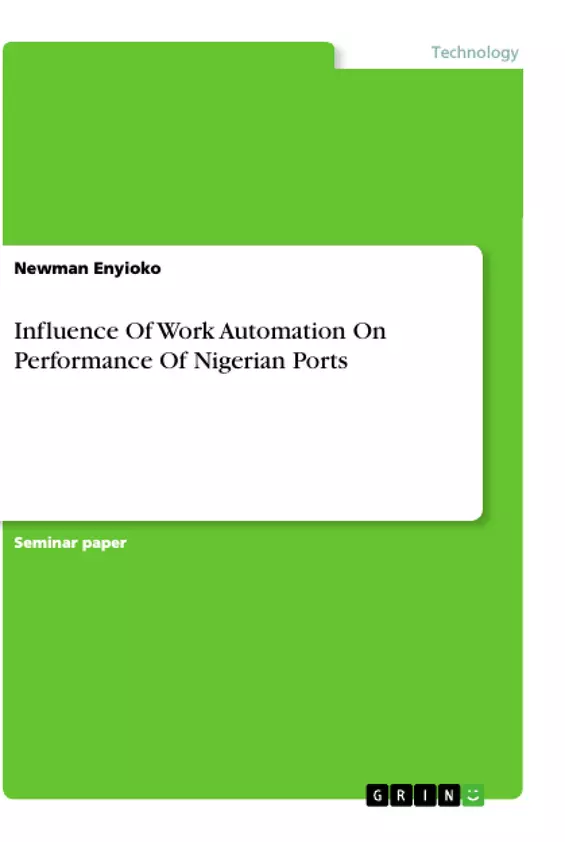The study examined the influence of work automation on the performance of Nigeria ports. The study population was the entire sea-ports in Nigeria. In line with the purpose of study, the study adopted the survey/cross sectional approach. The major research instrument used collect data was the questionnaire. Thirty copies of questionnaire were distributed to the respondents from the six major sea-ports in Nigeria. The respondents were department heads and senior port managers. Work automation was used as the independent variable of the study and measures of port performances were productivity and the throughput level of the sea-port.
Two hypotheses were developed and tested to determine the extent of the relationship between the study variables. Pearson product moment analysis was used to test the stated hypotheses with the aid of statistical package for the social sciences. The findings of the study revealed that to a very large extent, work automations are often used as key performance indicators (KPI) in Nigeria port. This is true of the system of administration of all port management authority in Nigeria. To a very large extent, the study observed that ports give room for the assessment of work automations. To a very large extent, the respondents were allowed to make variety of inputs on work automations in their various sea-ports.
Staff of the ports have the requisite skills to give critical assessment on the issues of work automations. Conclusively, it is evident from the study that there is significant relationship between work automations and productivity in Nigerian ports and there is significant relationship between work automations and cargo throughputs in Nigerian ports. Therefore, port managers should improve on the service quality of their port by recommending improve work automation of the port activities in such a manner that will aid the effective performances of the port operations.
Inhaltsverzeichnis (Table of Contents)
- Introduction
- Literature Review
- Conceptual Framework
- Work Automations
Zielsetzung und Themenschwerpunkte (Objectives and Key Themes)
This study investigates the influence of work automation on the performance of Nigerian ports, specifically examining its impact on productivity and cargo throughput levels. The research aims to determine the relationship between work automation and these key performance indicators, providing insights for improving port operations.
- Work automation in port operations
- Impact of work automation on port productivity
- Relationship between work automation and cargo throughput
- Challenges and benefits of work automation in Nigerian ports
- Recommendations for enhancing port performance through automation
Zusammenfassung der Kapitel (Chapter Summaries)
- Introduction: This chapter introduces the research topic and highlights the significance of work automation in improving port efficiency. It outlines the research questions and hypotheses that will be investigated throughout the study.
- Literature Review: This chapter provides a comprehensive overview of existing literature on work automation in port operations. It explores the various technologies and applications of automation, discussing both their potential benefits and drawbacks.
- Conceptual Framework: This chapter presents the conceptual framework of the study, outlining the relationship between work automation and port performance. It defines key concepts such as productivity, cargo throughput, and work automation.
- Work Automations: This chapter delves into the different aspects of work automation in port operations, exploring various technologies and their application. It discusses the evolution of automation across different areas of port activity, such as material unloading, cargo handling, and inventory management.
Schlüsselwörter (Keywords)
The main keywords and focus topics of this study are: work automation, port performance, productivity, cargo throughputs, Nigerian ports, information communication technology, digitalization, smart ports, efficiency, and supply chain management.
- Citar trabajo
- Dr. Newman Enyioko (Autor), 2020, Influence Of Work Automation On Performance Of Nigerian Ports, Múnich, GRIN Verlag, https://www.grin.com/document/978323



